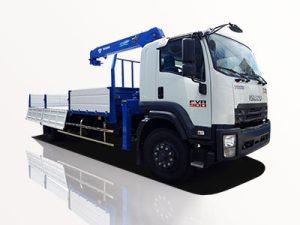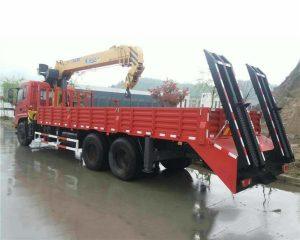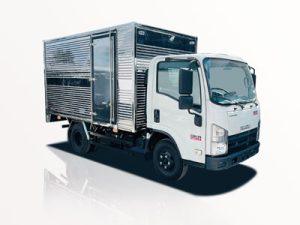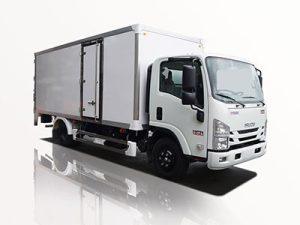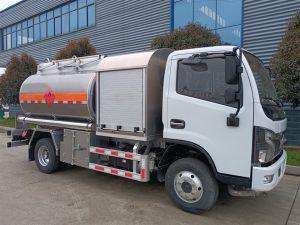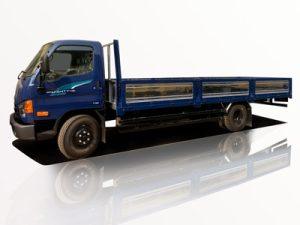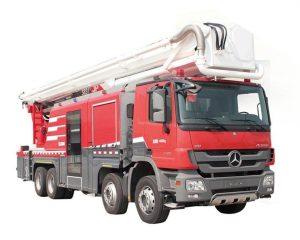Monday to Saturday - 8:00 -17:30
How a Trash Truck Works: A Comprehensive Guide
Trash trucks play a crucial role in municipal waste management and sanitation. Understanding how these vehicles operate can shed light on the logistics behind cleanliness in urban settings. This article explores the anatomy, functionality, and operational process of trash trucks in detail.
1. Introduction to Trash Trucks
Trash trucks, also known as waste collection vehicles, are specialized vehicles designed for collecting and transporting solid waste. They are equipped with mechanisms that allow them to pick up trash from various locations efficiently. The proper understanding of how a trash truck works is essential for anyone interested in waste management or municipal services.
2. Types of Trash Trucks
2.1 Front-Load Trucks
Front-load trucks are commonly used in commercial areas. They are designed to lift and dump large, front-loaded containers easily.
2.2 Rear-Load Trucks
Rear-load trucks are typical in residential areas. They require manual labor as the waste is loaded from the rear of the vehicle.
2.3 Side-Load Trucks
Side-load trucks use automated systems to collect waste from bins located beside the road, allowing for a one-person operation.
2.4 Roll-off Trucks
Roll-off trucks are primarily used for construction waste or large clean-ups. They transport roll-off containers that can be loaded and dumped at different sites.
3. Anatomy of a Trash Truck
3.1 Chassis
The chassis is the truck’s frame, providing structural support for the body and components.
3.2 Compaction Mechanism
Trash trucks use a compaction mechanism to compress waste, maximizing space and efficiency. When waste is deposited, hydraulic arms push it against the chamber walls, compacting the material significantly.
3.3 Collection System
The collection system includes the loading mechanism, either manual or automated, that picks up waste from curbside bins or dumpsters.
3.4 Hydraulic System
Most trash trucks utilize a hydraulic system for lifting and lowering containers, as well as for the compacting mechanism.
4. How Trash Trucks Collect Waste
4.1 Scheduling and Routing
Waste collection follows a strict schedule to ensure efficiency. Routes are planned based on population density, collection frequency, and traffic patterns.
4.2 Manual vs. Automated Collection
In areas where manual labor is used, workers physically load waste into the truck. In automated systems, the truck uses mechanical arms to grasp and dump waste from bins.
4.3 Safety Features
Modern trash trucks are equipped with safety features such as backup cameras, sound alarms, and lights to ensure safety during operation.
5. Waste Compaction Process
5.1 Importance of Compaction
Compaction is essential for maximizing truck load capacity and reducing the number of trips to landfills. It helps minimize transportation costs and environmental impact.
5.2 Compaction Cycle
The compaction process involves the following steps:
- Loading waste into the hopper.
- Activating the hydraulic system to compact the waste.
- Monitoring the load to ensure optimal compaction.
6. Transportation of Waste
6.1 Journey to the Landfill
Once the truck has collected enough waste, it heads to a designated landfill or waste processing facility. Timing and route are critical to avoid congestion and ensure efficient unloading.
6.2 Unloading Process
Upon arrival, trucks either tip their loads or use a compaction mechanism to unload waste efficiently. The unloading process should minimize time spent at the facility.
7. Environmental Considerations
7.1 Reducing Waste Impact
While trash trucks are essential for sanitation, their environmental impact can be reduced through:
- Using alternative fuels, such as compressed natural gas.
- Implementing recycling programs to divert waste from landfills.
- Encouraging public awareness of waste reduction.
7.2 Innovations and Advances
New technologies, such as smart waste management systems, are being integrated into trash collection, improving efficiency and tracking waste patterns through IoT devices.
8. Challenges Faced by Trash Truck Operators
8.1 Weather Conditions
Heavy rain or snow can affect waste collection efficiency, leading to delays or hazardous working conditions.
8.2 City Infrastructure
Poorly maintained roads and narrow streets can complicate collection routes, causing operational challenges and potential damage to trucks.
8.3 Public Engagement
Encouraging residents to participate in proper waste disposal practices is crucial for effective waste management. Education and community outreach programs can help alleviate this challenge.
9. Career Opportunities in Waste Management
9.1 Jobs in Waste Collection
Careers in waste management include roles such as truck drivers, maintenance personnel, and waste management supervisors. Each plays a vital role in keeping communities clean.
9.2 Training and Certifications
Interested individuals can pursue a career in waste management through vocational training, certifications, and on-the-job training programs. Safety education is crucial for this industry.
10. Frequently Asked Questions (FAQ)
10.1 What types of waste can trash trucks collect?
Trash trucks typically collect solid waste, recyclables, and yard waste, depending on local regulations and services provided.
10.2 How often do trash trucks come to collect waste?
Collection frequency varies by municipality; residential areas typically see pickups once a week, while commercial areas may have more frequent collections.
10.3 What happens to waste after it’s collected?
Once collected, waste is transported to landfills, recycling centers, or waste-to-energy facilities for processing.
10.4 Are trash trucks environmentally friendly?
Modern trash trucks are becoming more environmentally friendly through the use of alternative fuels and advanced technology that optimizes waste collection processes.
10.5 How can I reduce the amount of waste I generate?
To reduce waste, practice recycling, composting, and mindful consumption. Engage in community clean-up programs and support local sustainability initiatives.
10.6 How is the size of a trash truck determined?
The size of a trash truck is determined by its intended use, such as residential or commercial collection, as well as the volume of waste typically collected in a given area.
Understanding how a trash truck works not only enhances our appreciation of these essential vehicles but also informs us about our role in effective waste management. From their collection mechanisms to innovative environmental considerations, trash trucks are a vital part of keeping our communities clean and healthy.


